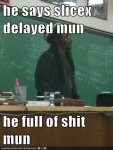can you load up an mp3 into slicex
delete approximately everything before and after where you want the loop
create hitpoints
delete everything but the first and last hitpoint
then copy and paste whats in between the two hitpoints as audio
???
someone said I would have to like delete everything before my segment that I want to make a loop like within 100ms of first and last slice... then load into slicex and play on piano roll and into Edison and after it plays several times Edison would detect its a loop and I could drag a loop from that
delete approximately everything before and after where you want the loop
create hitpoints
delete everything but the first and last hitpoint
then copy and paste whats in between the two hitpoints as audio
???
someone said I would have to like delete everything before my segment that I want to make a loop like within 100ms of first and last slice... then load into slicex and play on piano roll and into Edison and after it plays several times Edison would detect its a loop and I could drag a loop from that
Last edited by a moderator:

